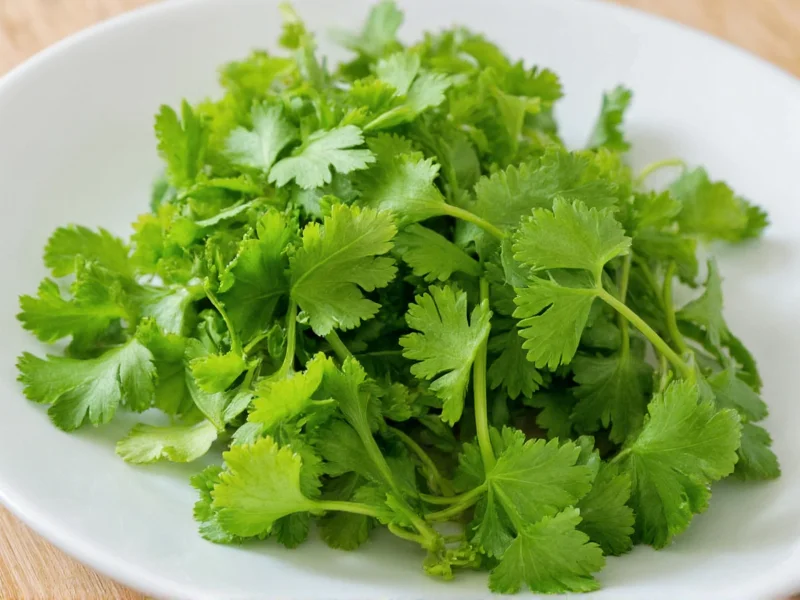No, celery and coriander are not the same plant. Celery (Apium graveolens) and coriander (Coriandrum sativum), also known as cilantro, are distinct plants from the same botanical family (Apiaceae) but different genera. They have unique appearances, flavors, and culinary applications that make them easily distinguishable once you know what to look for.
Understanding the difference between celery and coriander is essential for both home cooks and gardening enthusiasts. Despite belonging to the same plant family (Apiaceae), these herbs couldn't be more different in practical terms. Celery features long, crisp stalks with a mild, slightly salty flavor profile, while coriander offers delicate, lacy leaves with a bright, citrusy taste that some describe as soapy due to genetic factors.
Botanical Classification Explained
While both plants share the Apiaceae family—sometimes called the carrot or parsley family—they diverge significantly at the genus and species levels. Celery (Apium graveolens) has been cultivated for its crunchy stalks for centuries, with three main varieties: stalk celery, leaf celery, and root celery (celeriac). Coriander (Coriandrum sativum) is grown for both its fresh leaves (cilantro) and dried seeds (coriander spice), making it a dual-purpose herb.
Visual Identification Guide
Telling these plants apart is straightforward when you know their distinctive features. The following table highlights key differences between celery and coriander that even novice gardeners can recognize:
| Feature | Celery (Apium graveolens) | Coriander/Cilantro (Coriandrum sativum) |
|---|---|---|
| Stem Structure | Thick, ribbed, stringy stalks growing in a tight cluster | Thin, hollow, branching stems with no central cluster |
| Leaf Shape | Larger, triangular leaves with smooth edges | Small, lacy, deeply lobed leaves resembling parsley |
| Plant Height | 12-18 inches tall when mature | 18-24 inches tall when mature |
| Flower Appearance | Small white flowers in umbrella-shaped clusters | Small white or pale pink flowers in delicate clusters |
| Root System | Shallow, fibrous roots | Taproot system (especially noticeable in mature plants) |
Culinary Applications Compared
Celery's primary culinary value comes from its crunchy stalks, which provide texture and a subtle vegetal flavor to soups, stews, and salads. The inner stalks (often called 'heart celery') are particularly tender and flavorful. In contrast, coriander's fresh leaves (cilantro) deliver a bold, citrusy punch essential to Latin American, Asian, and Middle Eastern cuisines. The seeds, known as coriander, offer a warm, slightly citrusy flavor when ground and are fundamental to spice blends like garam masala and curry powder.
Professional chefs emphasize that substituting one for the other dramatically alters dish outcomes. As culinary expert Maria Rodriguez explains: "Celery adds structural integrity and subtle flavor to mirepoix and sofrito bases, while coriander leaves provide a bright finishing note that would be completely lost if replaced with celery."
Common Misconceptions Explained
The confusion between celery and coriander often stems from three factors: their shared botanical family, similar leaf shapes to the untrained eye, and regional naming variations. In some countries, particularly in parts of Asia, certain celery varieties with more pronounced leaf growth get mistakenly called 'Chinese celery' or 'coriander celery,' further muddying the waters.
Another source of confusion involves the seeds. While celery seeds exist and have culinary uses, they're completely different from coriander seeds. Celery seeds come from a specific variety of celery grown for seed production (Apium graveolens var. secalinum) and have a stronger, more concentrated celery flavor compared to the stalks.
Practical Substitution Guidance
When a recipe calls for one and you only have the other, understanding appropriate substitutions is crucial. For celery stalks, consider using: bok choy stems, fennel stalks, or even jicama for crunch. For coriander leaves, suitable alternatives include parsley (for texture), culantro (for stronger flavor), or a combination of basil and lemon zest for the citrus notes.
Important note: Never substitute celery leaves for coriander in equal quantities. Celery leaves have a much milder flavor profile and won't provide the distinctive citrus punch that coriander delivers. When substituting, use approximately three times the amount of celery leaves to approximate coriander's flavor impact.
Growing Considerations
Gardeners should note these plants have different growing requirements despite their botanical relationship. Celery prefers consistently moist soil and partial shade, requiring about 100-130 days to mature. Coriander grows faster (30-45 days for leaves) but bolts quickly in hot weather, making it challenging to grow in warm climates without careful timing.
Both plants benefit from regular harvesting to encourage new growth, but their harvesting techniques differ significantly. For celery, cut the entire stalk cluster at soil level when stalks reach 8-10 inches. For coriander, harvest outer leaves first, allowing the center to continue growing, or cut the entire plant when harvesting seeds.











 浙公网安备
33010002000092号
浙公网安备
33010002000092号 浙B2-20120091-4
浙B2-20120091-4